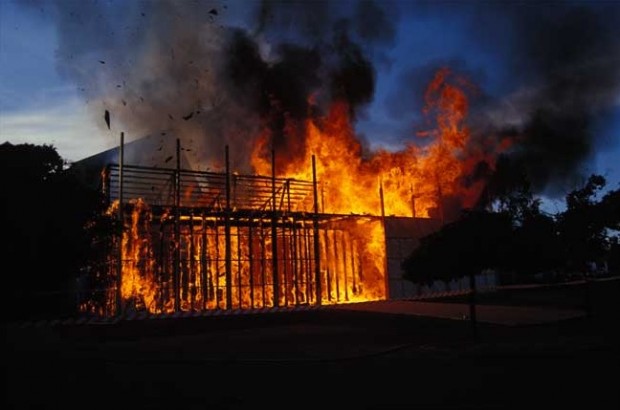An iconographic and text archive related to communication, technology and art.
J’appelle désastre ce qui n’a pas l’ultime pour limite : ce qui entraîne l’ultime dans le désastre.
I call disaster that which does not have the ultimate for a limit: it bears the ultimate away in the disaster.
☛ L’Écriture du désastre by Maurice Blanchot, Paris: Gallimard, pp. 33-34. English edition: The Writing of the Disaster tr. by Ann Smock, Lincoln: University of Nebraska Press, [1980]1995, p. 28.
• • •

This is an image from Alfredo Jaar’s project The Skoghall Konsthall (2000). One can learn more about it either through his official website or in the book Alfredo Jaar: The Fire This Time (by Mary Jane Jacob and Alfredo Jaar, Charta, 2005; Amzon). Below is a video recording of a small part of this project followed by an excerpt from an essay by Michael Corris published in Art Monthly in 2002 (also retrieved from Jaar’s official website).
One evening in September 2000, a substantial portion of the entire population of Skoghall, Sweden watched in astonishment as their public gallery, just 24 hours old, burnt to the ground.
As it happens, the story of the destruction of the Skoghall Konsthall ―a project approved by the town, conceived and designed by Alfredo Jaar and built with the aid of the world’s largest manufacturers of paper product― is as straightforward as its realisation. (Art Monthly: “Alfredo Jaar’s Lament for lost images” by Michael Morris, October 2002).
See more entries related to disaster.
- By Philippe Theophanidis
- on
- ― Published in Art, Communication
- Tagged: Alfredo Jaar, Blanchot, destruction, disaster, fire, image, limit, representation, writing
